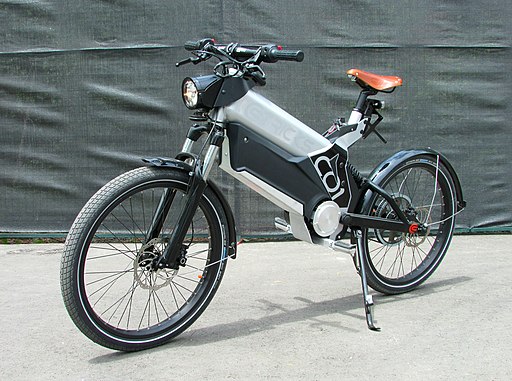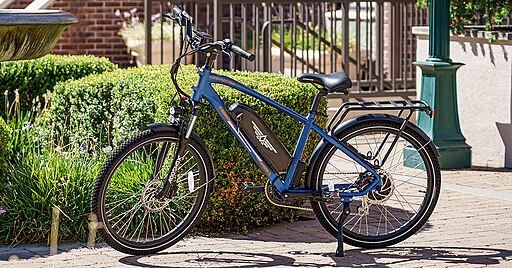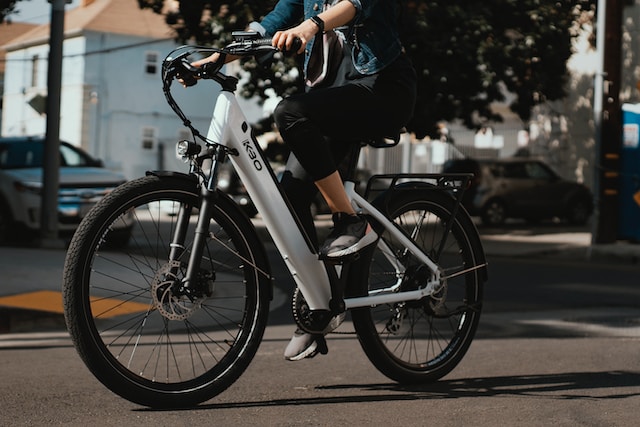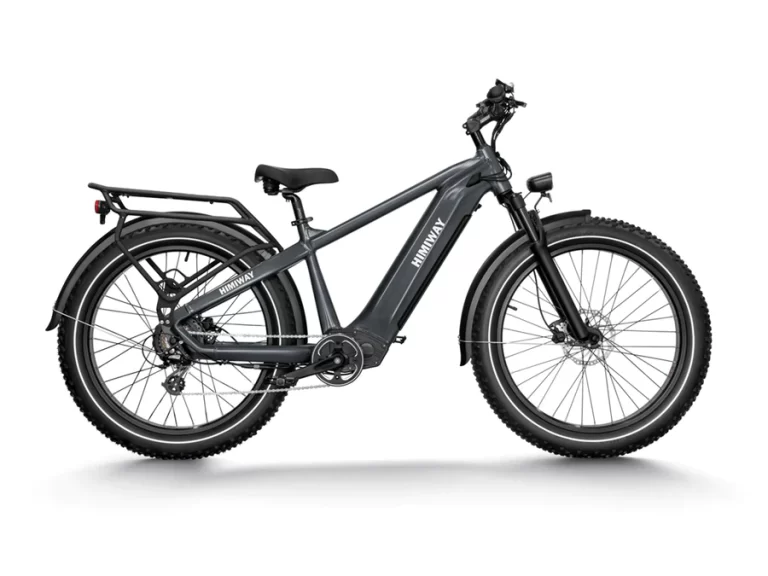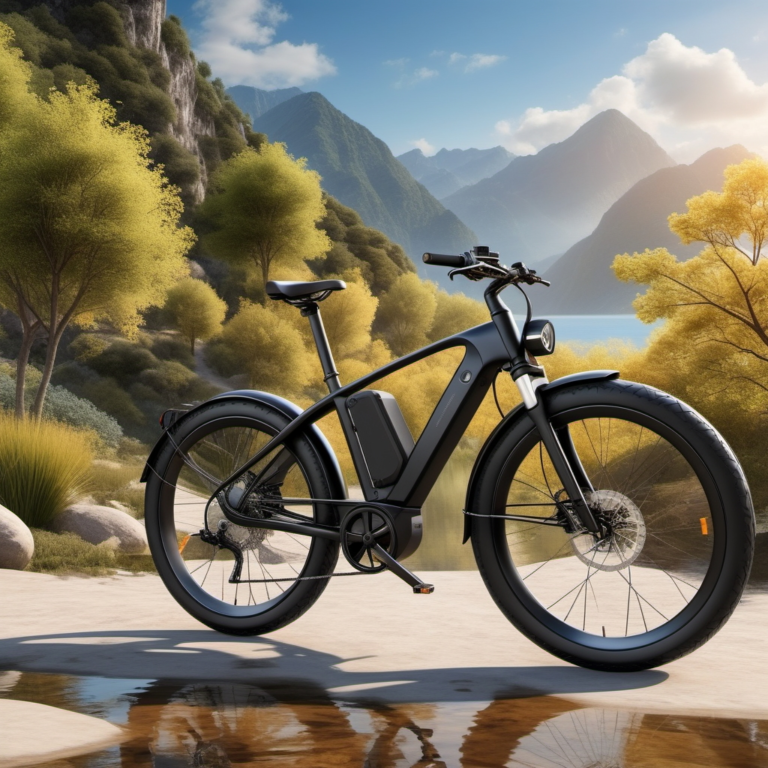5 Differences Between 250W and 750W E-Bikes: Power Up Your Ride
Last Updated on July 1, 2024 by Kristina Grant
E-bikes are surging in popularity, transforming the way we commute, exercise, and explore the outdoors. These pedal-assisted machines offer a powerful boost, making cycling accessible to a wider range of riders and injecting a thrilling dose of fun into every journey. But with e-bikes come a variety of motor wattages, each promising a different level of power and performance.
One of the biggest questions facing new e-bike enthusiasts is this: 250W or 750W? Understanding the difference between these two common motor wattages is crucial to choosing the perfect e-bike for your needs and riding style. In this blog post, we’ll look into the world of e-bike motors, unpacking the key factors to consider when deciding between a 250W or 750W option. We’ll also explore the legal landscape surrounding e-bikes, ensuring you ride confidently and responsibly. So, buckle up and get ready to power up your ride with the perfect e-bike!
Key Takeaways
- Higher wattage (750W) generally offers more power and speed, but may not be legal everywhere.
- Lower wattage (250W) can be sufficient for flat commutes and offers legal advantages in some regions.
- Consider your riding style and terrain to determine the necessary power.
- Factor in e-bike classifications and regulations in your area.
- Be cautious of low-cost, high-powered e-bikes that may not meet safety standards.
- Always wear a helmet, regardless of e-bike wattage (regulations may vary).
1. Power and Performance: Finding Your E-bike Sweet Spot
The battle between 250W and 750W motors boils down to one key question: how much power do you need to conquer your rides? Understanding the impact of motor wattage on performance will help you select the perfect e-bike for your terrain and riding style.
250W: Supportive and Efficient
- Ideal for Flat Terrain and Gentle Hills: A 250W motor provides a smooth and comfortable electric assist, perfect for cruising along flat paths or tackling modest inclines. Think of it as a gentle nudge that takes the edge off pedaling, making your rides less tiring and more enjoyable.
- Commuter Friendly: For daily commutes, a 250W motor offers a sufficient boost to navigate city streets and arrive at your destination feeling refreshed. The lighter weight of a 250W motor can also contribute to better overall handling and maneuverability in traffic.
- Budget-Conscious Choice: 250W motors tend to be more affordable due to their simpler design. This makes them a great option for riders looking for a cost-effective entry point into the world of e-bikes.
However, there are limitations:
- Steeper Hills Can Be Challenging: While 250W motors can handle some inclines, they might struggle on steeper hills, requiring more effort from the rider. If your rides regularly involve conquering tough climbs, you might need the extra oomph of a higher wattage motor.
- Hauling Cargo: The towing capacity of a 250W e-bike might be limited, especially on inclines. If you plan on carrying groceries, camping gear, or a trailer, consider a higher wattage motor for better performance under load.
750W: Powering Through Challenges
- Conquer Hills with Ease: A 750W motor delivers a significant power boost, making light work of even the steepest inclines. This allows you to maintain momentum and enjoy a more effortless ride, regardless of the terrain.
- Higher Speeds (within legal limits): 750W motors can propel e-bikes to faster assisted speeds (depending on local regulations). This can be beneficial for riders who prioritize efficiency and covering longer distances quickly.
- Tackle Off-Road Adventures: The extra power of a 750W motor is well-suited for off-road riding. It provides the muscle needed to navigate unpaved terrain, allowing you to explore with confidence.
The trade-off?
- Higher Cost: 750W motors typically come at a premium price point compared to 250W options.
- Battery Drain: The increased power of a 750W motor can sometimes lead to faster battery depletion. This is important to consider if you have long commutes or rides planned.
Choosing Your Power Perfect Partner
Ultimately, the best motor wattage depends on your individual needs. If you prioritize efficiency, affordability, and comfortable riding on flat terrain, a 250W motor is a great choice. However, if you crave the power to conquer hills, achieve higher speeds, or explore off-road, a 750W motor might be the better fit. Remember, test riding e-bikes with different wattages is crucial to experience the power difference firsthand and find your ideal match!
2. Speed Demons vs. Cruisers: Understanding E-bike Speed Limits
When it comes to e-bikes, speed isn’t everything, but it can be a major factor in your riding experience. Here’s a deeper dive into how motor wattage influences e-bike speed limits, helping you decide if a speed demon or a comfortable cruiser is your perfect match:
250W: Keeping it Legal and Relaxed
- Focus on Comfort and Efficiency: 250W motors typically comply with Class 1 or Class 2 e-bike regulations, which often limit assisted speeds to 20-25 mph (32-40 km/h). This focus on a moderate pace prioritizes a relaxed riding experience while adhering to legal restrictions in most areas. (Double-check your local laws!)
- Effortless Cruising: A 250W motor provides a gentle push that supplements your pedaling, allowing you to enjoy the scenery and navigate city streets without feeling overwhelmed by speed.
- Headwinds Won’t Hinder You As Much: While not a powerhouse, a 250W motor can still offer enough assist to overcome moderate headwinds and maintain a comfortable cruising speed. This can be especially beneficial for consistent riders who encounter regular wind resistance.
However, there are limitations:
- Slower Speeds on Hills: The lower power output of a 250W motor might translate to slower speeds when tackling inclines. If conquering hills at high speeds is a priority, you might need a more powerful motor.
- Long-Distance Touring Might Be Slower: For riders planning long-distance tours where speed is a factor, a 250W motor might limit your overall travel time.
750W: Reaching New Horizons (with Caution)
- Powering Through to Higher Speeds: 750W motors can propel e-bikes to reach higher assisted speeds (depending on classification), potentially reaching up to 28 mph (45 km/h) for Class 3 e-bikes. This allows for faster commutes, covering longer distances quicker, and keeping up with faster traffic flow (where permitted by law). (Always check your local e-bike speed limitations!)
- Conquering Hills with Momentum: The increased power of a 750W motor helps maintain momentum when climbing hills, allowing you to reach higher speeds on inclines compared to a 250W option.
- Long-Distance Touring Efficiency: For long-distance riders who prioritize speed and efficiency, a 750W motor can be a game-changer. It allows you to cover greater distances in less time, making extended tours more manageable.
The trade-off?
- Legal Considerations: Higher wattage motors often fall under stricter e-bike classifications (like Class 3) which might have additional regulations regarding registration, licensing, and helmet laws. Ensure you understand and comply with your local e-bike speed limitations for safe and legal riding.
- Safety at Higher Speeds: While exhilarating, higher speeds also demand greater responsibility. Always prioritize safe riding practices like wearing a helmet, using proper hand signals, and maintaining a safe distance from other riders and pedestrians.
Choosing Your Speed Ideal
Consider your riding style and priorities. If you enjoy a relaxed pace and legal compliance is a top concern, a 250W motor is a perfect choice. However, if speed and efficiency are crucial for your rides, a 750W motor might be the better option, remembering to adhere to local speed regulations and prioritize safety at all times. Test riding e-bikes with different wattages will allow you to experience the difference in speed firsthand and select the perfect match for your riding style.
RELATED CONTENT
3. Navigating the Legal Landscape: E-bike Classifications and Your Local Rules
E-bikes are revolutionizing transportation, but it’s important to remember that they don’t operate in a legal vacuum. Understanding e-bike classifications and the legal requirements in your area is crucial for responsible riding. Here’s a breakdown to help you navigate the legalities of e-bikes:
E-bike Classifications: A Universal Language (with Local Dialects)
E-bikes are categorized based on factors like motor wattage, assisted speed, and throttle presence. These classifications determine where you can ride your e-bike, whether you need registration or a license, and if there are helmet requirements. However, it’s important to remember that classifications and regulations can vary significantly by location.
Here’s a simplified overview of common classifications, but always double-check your local laws for specifics:
- Class 1 E-bikes: These have a 250W motor with a maximum assisted speed of 20-25 mph (32-40 km/h) and typically operate with pedal assist only (no throttle). They are generally treated like regular bicycles with regards to regulations. (Note: Always double-check your local laws for specifics)
- Class 2 E-bikes: These also have a 250W motor, but their assisted speed limit can be higher (around 20-25 mph / 32-40 km/h). They may allow for throttle operation in addition to pedal assist. Depending on your region, Class 2 e-bikes might require registration or licensure.
- Class 3 E-bikes: These pack a bigger punch, often featuring 750W motors and exceeding assisted speed limits of 25 mph (40 km/h) with throttle capabilities. In many areas, Class 3 e-bikes are considered mopeds and subject to stricter regulations, including registration, licensing, and helmet laws.
The Power of Local Laws:
While classifications offer a general framework, e-bike regulations can differ significantly from state to state, and even city to city. Here’s how to ensure legal and safe riding:
- Research Local E-bike Regulations: Your local Department of Motor Vehicles (DMV) website is a great starting point. Often, you can find a dedicated section on e-bike classifications and regulations.
- Contact Your Local Transportation Authority: Don’t hesitate to reach out to your local transportation authority for clarification on specific e-bike classifications and requirements in your area. They can provide you with the most up-to-date information.
- Consult E-bike Advocacy Groups: Local cycling advocacy groups can be valuable resources for understanding e-bike regulations and safe riding practices.
Understanding the Differences:
It’s important to distinguish e-bikes from other electric micromobility options:
- Mopeds: Generally have higher powered motors ( exceeding 50cc or 1500W) and reach speeds exceeding 30 mph (48 km/h). They are typically classified as motor vehicles and require registration, licensing, and insurance.
- Electric Scooters: These lightweight vehicles often have lower powered motors (around 250W) and speed limitations similar to Class 1 e-bikes. Regulations for electric scooters can vary, so check your local laws.
Ride with Confidence – Ride with Knowledge
By understanding e-bike classifications and complying with local regulations, you can ensure safe and legal riding. Remember, a little research goes a long way in avoiding potential fines or legal issues. Now you’re ready to explore the world of e-bikes with confidence!
4. Balancing Power and Endurance: Understanding E-bike Battery Range
While motor wattage is a key factor in e-bike performance, it’s not the only story when it comes to conquering your rides. E-bike range, or the distance you can travel on a single battery charge, plays a crucial role in planning your adventures. Here’s a deeper dive into understanding e-bike range and how it factors into your decision-making:
The Many Factors Influencing Range:
Several elements contribute to an e-bike’s range, making it difficult to provide a definitive answer. Here are some key influences:
- Motor Wattage: Higher wattage motors generally consume battery power faster due to the increased power demands they place on the battery. However, this doesn’t necessarily mean a 250W motor will always offer the greatest range. It depends on how you use the motor assist.
- Battery Capacity: Measured in watt-hours (Wh), battery capacity directly impacts range. A higher Wh rating signifies a larger battery that can store more energy and potentially offer a greater range.
- Riding Terrain: Tackling hills requires more power from the motor, draining the battery faster compared to riding on flat terrain. Hillier rides will generally see a decrease in overall range.
- Riding Style: Utilizing the motor assist more frequently, especially at higher power levels, will deplete the battery quicker. Riders who rely less on the motor assist and prioritize pedaling will enjoy a longer range.
- Rider Weight: Carrying more weight (rider and cargo) puts a strain on the motor, potentially reducing range.
Planning Your Rides with Range in Mind:
Here are some tips to maximize your e-bike’s range and ensure you don’t run out of juice on your adventures:
- Understanding Your Typical Ride Distance: Knowing how far you typically ride will help you choose an e-bike with a battery capacity that can comfortably handle your needs.
- Consider a Higher Battery Capacity for Longer Rides: If you plan on venturing on extended adventures, opting for a larger battery capacity (measured in Wh) will provide peace of mind and prevent range anxiety.
- Utilize Eco Mode: Many e-bikes offer different power modes, with Eco mode providing the least amount of assist and maximizing battery life. Use Eco mode on flat terrain or when conserving battery power is crucial.
- Charge Regularly: Don’t wait until the battery is completely depleted to recharge. Develop a habit of charging your e-bike battery regularly, ensuring it’s always ready for your next ride.
250W vs. 750W: A Range Perspective:
While a 750W motor offers undeniable power advantages, it often comes at the expense of range. The higher power demands can drain the battery faster compared to a 250W motor. However, if you utilize the 250W motor’s assist sparingly and prioritize pedaling, you might achieve a similar range to a 750W motor used at a higher assist level.
Finding the Range Sweet Spot:
Ultimately, the ideal range depends on your riding habits. If you prioritize shorter commutes or leisure rides with minimal motor assist, a 250W motor with a moderate battery capacity might be sufficient. However, for riders who crave longer distances and frequent use of the motor assist, a 750W motor paired with a larger battery capacity is a better choice. Test riding e-bikes with different motor and battery combinations will allow you to experience the impact on range firsthand and select the perfect match for your riding adventures.
5. Unveiling the Price Tag: Balancing Budget and E-bike Value
E-bikes offer a thrilling blend of performance and eco-friendly transportation, but let’s face it – cost is a major consideration. Here’s a breakdown of how motor wattage influences e-bike pricing, helping you find the best value for your budget:
250W: Budget-Friendly Power
- Generally More Affordable: Due to their simpler design, 250W motors are typically less expensive than their higher-wattage counterparts. This makes them a great option for riders looking for a cost-effective entry point into the world of e-bikes.
- Lower Overall System Cost: The affordability of 250W motors often extends to the entire e-bike. You might find that e-bikes with 250W motors come at a more attractive price point compared to those featuring 750W motors.
However, there are trade-offs:
- Limited Power for Hills and Cargo: As previously mentioned, 250W motors might struggle on steeper inclines and with heavy loads. If your rides regularly involve challenging terrain or hauling cargo, you might need the extra muscle of a higher wattage motor, potentially increasing the cost.
750W: Power at a Premium
- Higher Cost Due to Increased Power: The ability to conquer hills and achieve higher speeds comes at a price. E-bikes equipped with 750W motors generally have a higher price tag compared to their 250W counterparts.
But the benefits can be significant:
- Versatility for Various Terrains: The increased power of a 750W motor allows you to tackle a wider range of terrains, from flat paths to challenging hills. This versatility can be valuable for riders who explore diverse landscapes.
- Potential for Higher Speeds: For riders who prioritize efficiency and covering longer distances quickly, a 750W motor can be a game-changer, allowing them to reach higher assisted speeds (within legal limits).
Finding Your Financial Sweet Spot:
Consider your riding needs and budget. If affordability is a top concern and your rides are primarily flat with minimal cargo, a 250W motor e-bike might be the perfect budget-friendly choice. However, if you crave the power to conquer hills, explore diverse terrains, or value faster commutes, a 750W motor e-bike might be worth the investment.
Remember, test rides are crucial! Experience the difference in power and handling between 250W and 750W e-bikes firsthand. This will help you determine if the additional cost of a 750W motor aligns with the value it brings to your riding experience.
Beyond the Motor: While motor wattage significantly impacts price, it’s not the only factor. Consider the overall quality of components like the battery, drivetrain, and brakes. Investing in a well-built e-bike, regardless of motor wattage, ensures a more durable and enjoyable riding experience in the long run.
FAQs
A: Absolutely! E-bikes are a clean and energy-efficient mode of transportation compared to gas-powered vehicles. They contribute to reduced carbon emissions and noise pollution, making them a great choice for eco-conscious riders.
A: E-bikes require regular maintenance just like regular bicycles. Focus on keeping the drivetrain clean and lubricated, checking tire pressure, and ensuring the brakes function properly. Consult your e-bike’s manual for specific maintenance instructions related to the motor and battery.
A: Safety first! Always wear a properly fitted helmet, regardless of e-bike wattage or classification in your area. Be aware of your surroundings, use bike lanes whenever possible, and ride defensively. Familiarize yourself with the e-bike’s controls and practice in a safe environment before hitting the open road.
A: Numerous resources are available online and in your local community. E-bike manufacturers and retailers often have detailed information on their websites. Cycling advocacy groups and local e-bike clubs can be great sources for recommendations and riding tips.
Conclusion:
The world of e-bikes is brimming with possibilities, offering a perfect option for every rider. By understanding the impact of motor wattage, considering your riding style and needs, and familiarizing yourself with local regulations, you’re well on your way to selecting the ideal e-bike companion.
Remember: The key takeaway is choosing an e-bike that empowers your rides and complements your cycling goals. Don’t hesitate to delve deeper into e-bike research. Explore resources like [e-bike buying guides], and discover safety information from reputable sources. Most importantly, check your local e-bike regulations to ensure legal and responsible riding. (You can find your local Department of Motor Vehicles (DMV) website through a quick online search).
Ready to experience the thrill of e-bikes? Visit your local e-bike shop and take a test ride! The friendly staff can answer your questions, help you find the perfect e-bike fit, and get you rolling towards a whole new cycling adventure. So, what are you waiting for? Power up your ride and discover the joy of e-bikes!
Kristina Grant is not just an enthusiast but a true authority on electric bikes. Nestled in the coastal beauty of Virginia, Kristina has found the perfect backdrop for her passion for electric biking. As a dedicated wife and homeschooling mom, her life revolves around family, faith, and the thrill of adventure.
Originally hailing from Ohio, Kristina's journey with electric bikes began as a curiosity and quickly evolved into a deep expertise. Her blog is a testament to her love for electric biking, combining her fascination for eco-friendly transportation with her coastal lifestyle.
When she's not cruising the beach on her electric bike, you'll find Kristina indulging in her other loves: long walks along the shore, getting lost in a good book, and cherishing moments with her loved ones. With a heart as big as her love for animals, especially cats, Kristina brings a unique perspective to the electric bike world, grounded in her strong faith in God and her dedication to a sustainable lifestyle.
Through her blog, Kristina shares her extensive knowledge of electric bikes, offering valuable insights, tips, and recommendations to fellow enthusiasts. Whether you're a seasoned rider or a newcomer to the electric bike scene, Kristina's blog is your go-to source for all things electric biking, fueled by her passion, expertise, and the scenic beauty of coastal Virginia.

